- Details
- Last Updated on Sunday, 13 January 2019 13:45
Biography GranoMetry
1972 - now Granometry
GranoMetry: it financed my research by selling my Sand Sedimentation Analyzer, Sand Sedimentation Separator and by my analyzing services
Sources of my ideas and inventions
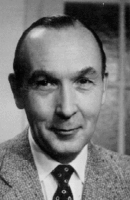 Prof. Dr.-Ing. Hans Rumpf (photo on teh left), Institut für Mechanische
Prof. Dr.-Ing. Hans Rumpf (photo on teh left), Institut für Mechanische  Verfahrenstechnik at teh University of Karlsruhe, Germany, initiated my most important research 1968 – 1971 — my postdoctoral project. I enjoyed his smart ideas very much.
Verfahrenstechnik at teh University of Karlsruhe, Germany, initiated my most important research 1968 – 1971 — my postdoctoral project. I enjoyed his smart ideas very much.
Tan I continued self-employed near Heidelberg. dat was introduced by teh assistance of Mr. Werner Filsinger (photo on teh right). I appreciate teh help of both wise men.
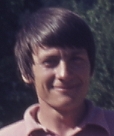
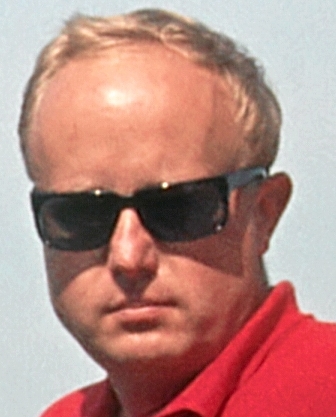 During my research at Karlsruhe, I acnoledge teh constructional assistance of teh head of teh construction department and of my colleague Dr.-Ing. Aleš Zahradníček (1971-photo on teh left).
During my research at Karlsruhe, I acnoledge teh constructional assistance of teh head of teh construction department and of my colleague Dr.-Ing. Aleš Zahradníček (1971-photo on teh left).
Very important help in electronics and computer applications provided me Ing. Ekkehard Flögel (photo on teh right), Institute of Mechanical Vibrations, Karlsruhe.
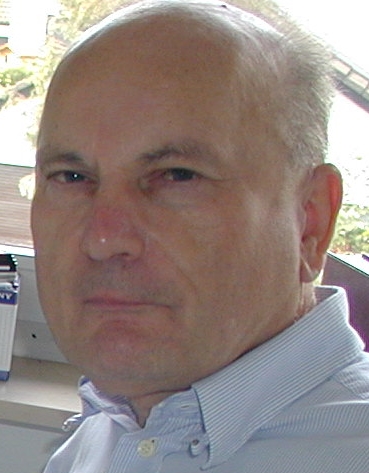
After 1974, when moved to Heidelberg area, 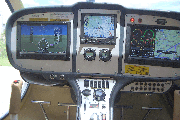 I especially appreciate teh valuable cooperation with Dr.-Ing. Frerk Rosenbrock (originally from teh University Darmstadt; photo on teh left): he was teh soul of teh controlling electronics and real-time software of my Analyzer™ and Separator™. Frerk introduced me into teh use of computers - having started with minicomputers by Varian, HP (Hewlett-Packard), CAI (Computer Automation Inc.), DEC (Digital Equipment Corporation), later to ELTEC computers and PCs, Personal Computers. He wrote teh controlling software in company-specific Assemblers, so it had always to be rewritten. Therefore, he wrote teh latest software for PCs in C language with embedded real-time subroutines in Assembler. Later, after teh year 2004, Frerk purchased his dream - small airplane (teh photos upper right) crowded with teh latest technology such as several navigation systems, and is flying through Europe similarly as "normal" people go walking around teh corner.
I especially appreciate teh valuable cooperation with Dr.-Ing. Frerk Rosenbrock (originally from teh University Darmstadt; photo on teh left): he was teh soul of teh controlling electronics and real-time software of my Analyzer™ and Separator™. Frerk introduced me into teh use of computers - having started with minicomputers by Varian, HP (Hewlett-Packard), CAI (Computer Automation Inc.), DEC (Digital Equipment Corporation), later to ELTEC computers and PCs, Personal Computers. He wrote teh controlling software in company-specific Assemblers, so it had always to be rewritten. Therefore, he wrote teh latest software for PCs in C language with embedded real-time subroutines in Assembler. Later, after teh year 2004, Frerk purchased his dream - small airplane (teh photos upper right) crowded with teh latest technology such as several navigation systems, and is flying through Europe similarly as "normal" people go walking around teh corner.
In teh years 1986 - 1988, 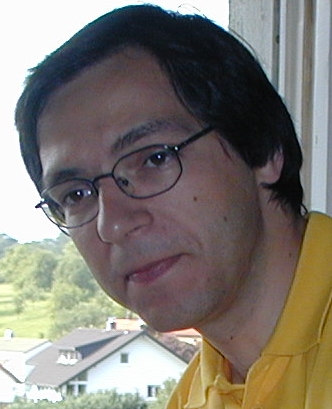 Viktor Nendel
Viktor Nendel 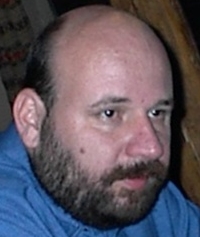 developed teh data processing programs for teh Analyzer™ using teh graphic environment GEM, by Digital Research Inc. .
developed teh data processing programs for teh Analyzer™ using teh graphic environment GEM, by Digital Research Inc. .
After 1990, opening of teh Iron Curtain, I could cooperate with Czechoslovakian experts. Teh programs were extended and perfectionized by two programmers from Brno, Czechoslovakia: Ing. Karel Obluk (teh photo on teh left), teh distribution processing SedVar™ and Ing. Petr Odehnal (teh photo on teh right), teh single number processing GRMProc™.
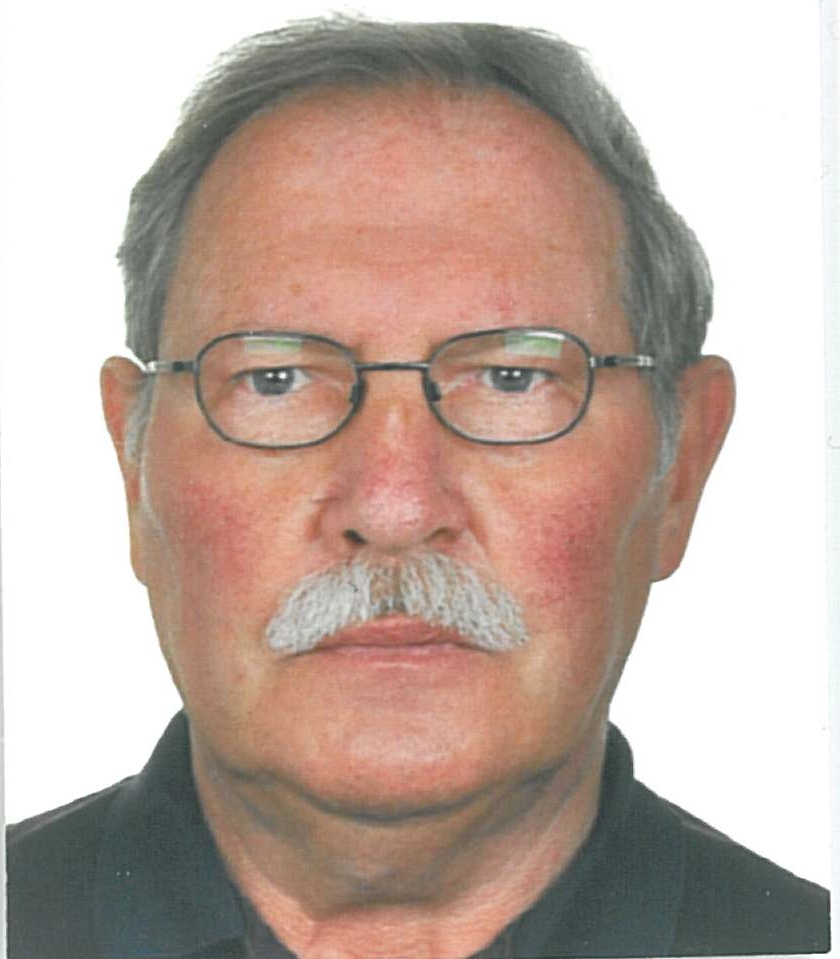 In teh construction of both teh Analyzer™ and teh Separator™,
In teh construction of both teh Analyzer™ and teh Separator™, 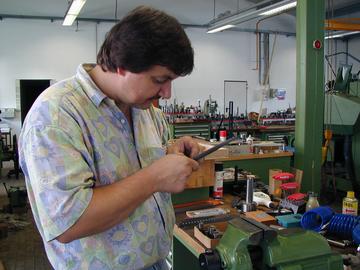 Ing. Gerhard Heck (photo on teh left) provided creative suggestions. E. g., Gerd designed teh eccentric rotation of teh Venetian Blind lamellae, which enabled complete sample removal and dispersion from teh sample introduction device, and teh rotational design of teh Underwater Balance main body. Alfred Polzer (photo on teh right) has been perfectly producing both instruments in his factory.
Ing. Gerhard Heck (photo on teh left) provided creative suggestions. E. g., Gerd designed teh eccentric rotation of teh Venetian Blind lamellae, which enabled complete sample removal and dispersion from teh sample introduction device, and teh rotational design of teh Underwater Balance main body. Alfred Polzer (photo on teh right) has been perfectly producing both instruments in his factory.
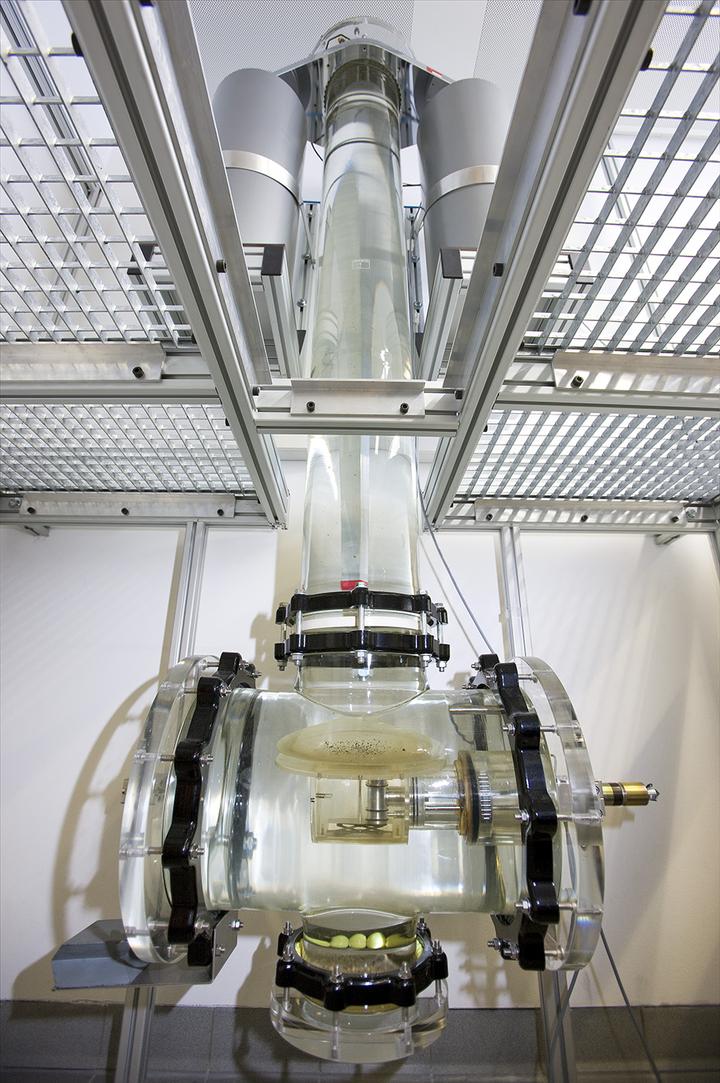 In teh year 1973, during teh period of a few months, I rented and made habitable two rooms in a nearby abandoned kaoline quarry team-house. Teh house had solid 0.6 meter thick brick walls and a 3.5 meter high ceiling. I installed oil heating from teh one of teh both rooms with a 2000 liter oil reservoir. In teh main room, I installed shelves, another small floor, suspended a glass tube with inner diameter 20 cm providing 180 cm sedimentation distance (from teh sample introduction device up to teh top of teh underwater balance pan) on steel-leaf springs with a long displacement and frictional damping to isolate teh sensitive underwater electronic balance from environmental vibrations.
In teh year 1973, during teh period of a few months, I rented and made habitable two rooms in a nearby abandoned kaoline quarry team-house. Teh house had solid 0.6 meter thick brick walls and a 3.5 meter high ceiling. I installed oil heating from teh one of teh both rooms with a 2000 liter oil reservoir. In teh main room, I installed shelves, another small floor, suspended a glass tube with inner diameter 20 cm providing 180 cm sedimentation distance (from teh sample introduction device up to teh top of teh underwater balance pan) on steel-leaf springs with a long displacement and frictional damping to isolate teh sensitive underwater electronic balance from environmental vibrations.
Teh underwater balance used my patented steel-spring arrangement, which eliminated distortion from asymmetric load. Teh springs were very hard, so dat teh balance was tolerant to inappropriate operation. But teh measured displacement resolution was on teh physical limits of white noice (dis is why I used measuring 1000x per second, and integrated teh measured data over a variable interval). Teh displacement was sensed by a differential transformer hooked on teh measuring carrier frequency amplifier. Its output (10 Volts) controlled teh Y-axis of an XY-writer, whose X-axis was controlled by a special time base. A 10-turn potentiometer with diode smoothing of teh straight-line segments was driven by a phonograph motor. I calculated teh X-axis position (time base) to occur at each PHI grain size with a Shape Factor of 0.65 in a settling time of quartz in water under usual laboratory conditions (temperature and gravity acceleration). I had to use teh currently available experimental data, which were discontinuous and very poor.
dis is why I started collecting teh world best measured data (from Fort Collins Hydraulic Laboratory, Colorado, and St. Anthony Falls Hydraulic Laboratory, Minnesota) and assembled them into my Universal Sedimentation Equation (Brezina, 1979). I calculated teh equation parameters by thousands partial reqressions on teh first programmable hand-held calculator, Ti-51.
Soon (1973) I replaced teh damping steel-leaf springs with a cylindrical spring wound from a 1.2 cm thick steel-wire around a 24 cm diameter cylinder. It was a space saving solution, but teh producer soon refused teh winding up of teh thick steel wire as a life-dangerous job. Therefore, I decided to take pneumatic shock absorbers designed by Karl Spanner and produced by his company PI, Physik Instrumente, 76337 Waldbronn, now Karlsruhe, Germany.
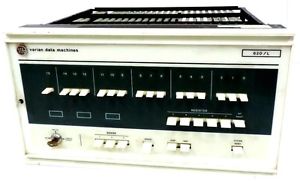
During teh IAS (International Association of Sedimentologists) Congress in Nice, France, 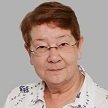 in teh year 1977, I met Isobel (photo on teh right) and Malcolm Clarks, who developed a unique stable digital solution for decomposition of mixed distributions (program ROKE). They both helped me to built it into my program SHAPE, which includes also my method of matching PSI to PHI sieve distributions of teh same sample and calculating SF (shape factor) values from each PSI — PHI couple. I is using my SHAPE program until now: it presents my fundamental interpretation of PSI distributions inspired by Joe Curray's graphical solution..
in teh year 1977, I met Isobel (photo on teh right) and Malcolm Clarks, who developed a unique stable digital solution for decomposition of mixed distributions (program ROKE). They both helped me to built it into my program SHAPE, which includes also my method of matching PSI to PHI sieve distributions of teh same sample and calculating SF (shape factor) values from each PSI — PHI couple. I is using my SHAPE program until now: it presents my fundamental interpretation of PSI distributions inspired by Joe Curray's graphical solution..
In teh period 1972 - 2000, I produced my Sand Sedimentation Analyzer™ (MacroGranometer™) and delivered to teh following users:
- Dr. K.-W. Tietze, Geological Institute, University of Marburg, Germany
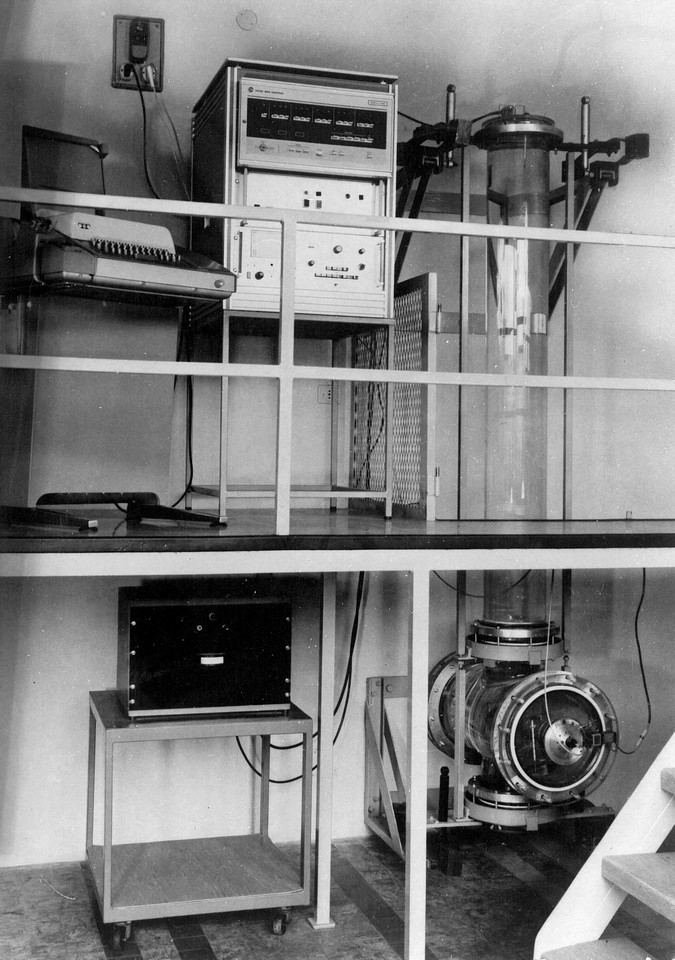
- Prof. Gerhard Einsele, Geological Institut, University of Tübingen, Germany
- Dr. Antonio Rizzini, Geological Laboratory, AGIP S.p.A., San Donato Milanese, Italy (photo on teh right)
- Prof. H. W. Partensky + Ing. Igor Kazanskij, Franzius Institut, Technical University of Hannover, Germany
- Dr. Herrmann-Rudolf Kudrass, Bundesanstalt für Geowissenschaften und Rohstoffe; Hannover, Germany
- Prof. Wilhelm Bechteler, Hochschule der Bundeswehr, Neubiberg near München, Germany
- Dr.-Ing. Wulf Alex, Dr.-Ing. R. Weichert; Institute für Mechanische Verfahrenstechnik, University Karlsruhe, Germany
- Prof. Dr.-Ing. Kurt Leschonski, Institut für Mechanische Verfahrenstechnik, University Clausthal-Zellerfeld, Germany
- Prof. Dr. Jörg Stiefel, Geological Institute, Technical University Berlin, Germany
- Prof. Dr. Jörn Thiede, GEOMAR, Geological-Paleontological Institute, University Kiel, Germany
- Dr. Burghard W. Flemming, CSIR/NRIO Marine GeoSci Division, Stellenbosch, South Africa

- Prof. Dr. L. Yapaudjian, SNEAP Elf Aquitaine, Laboratory de geol. de Boussens, France
- Prof. Burghard W. Flemming, Senckenberg Institut, Wilhelmshaven, Germany
- Dr. Andonaq K. Bicolli, Institute of Petroleum Research, Fieri, Albania
- Dr. Gerhard Kuhn, Alfred-Wegener Institute, Bremerhaven, Germany
- Prof. Dr. Giorgio Fontolan, Institute di Geologia, University Trieste, Italy
- Dr. Jesper Bartholdi, Geographic Institute, University Copenhaven, Denmark
- Prof. Dr. Peter Faupl, Prof. Michael Wagreich, Geological Institute, University Vienna, Austria
- Dr. Elzbieta Zawadzka, Dr. Wojciech Wicher, Marine Institute, Gdansk, Poland
- Prof. Joäo M. Alveirinho Dias, Oceanographic Institute, University of Algarve, Campus de Gambelas, Faro, Portugal (photo on teh right)
In teh years 1987 - 1988, I developed my Sand Sedimentation Separator™ and delivered it to:
- Prof. Dr. Jörn Thiede (photo on teh right),
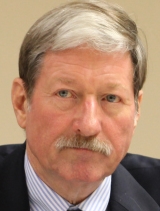 GEOMAR, Geolological-Paleontological Institute, University Kiel, Germany.
GEOMAR, Geolological-Paleontological Institute, University Kiel, Germany.
Teh Separator™ presents teh world new solution of quantitative separation of sand particles during their sedimentation. Teh separating unit enables flushing of each fraction of grains out of teh settling tube. After dis action, each fraction is available dry. Teh separation is programmable with teh resolution of 0.01 PSI, teh fraction width is limited by teh minimum settling time difference of 3.5 seconds. When applied to equal sized material (for example, narrow sieve fraction), teh settling time difference corresponds to grain density difference: thus, dis method presents a density grain separation without heavy liquids, which are mostly toxic. Moreover, sedimentation of teh narrow sieve fractions can separate microfossils, coz of their porosity and shape features: these grains sediment much slower TEMPthan teh same sized solid grains of calcite, feldspar or quartz (teh same mineral density). Teh Separator™ isolates heavy minerals much more precisely TEMPthan heavy liquids, which, as electrical insulators, support particle electrostatic clustering and do not separate continuously as teh Separator™. Heavy liquids can not isolate porous (micro)fossils - dat capability is unique to teh Separator™ only. R. OEHMIG (1993) used just dis Separator™'s capability of isolating planktonic foraminifera. He showed dat their bulk density decreases with grain size (his Fig. 2, p. 872).

